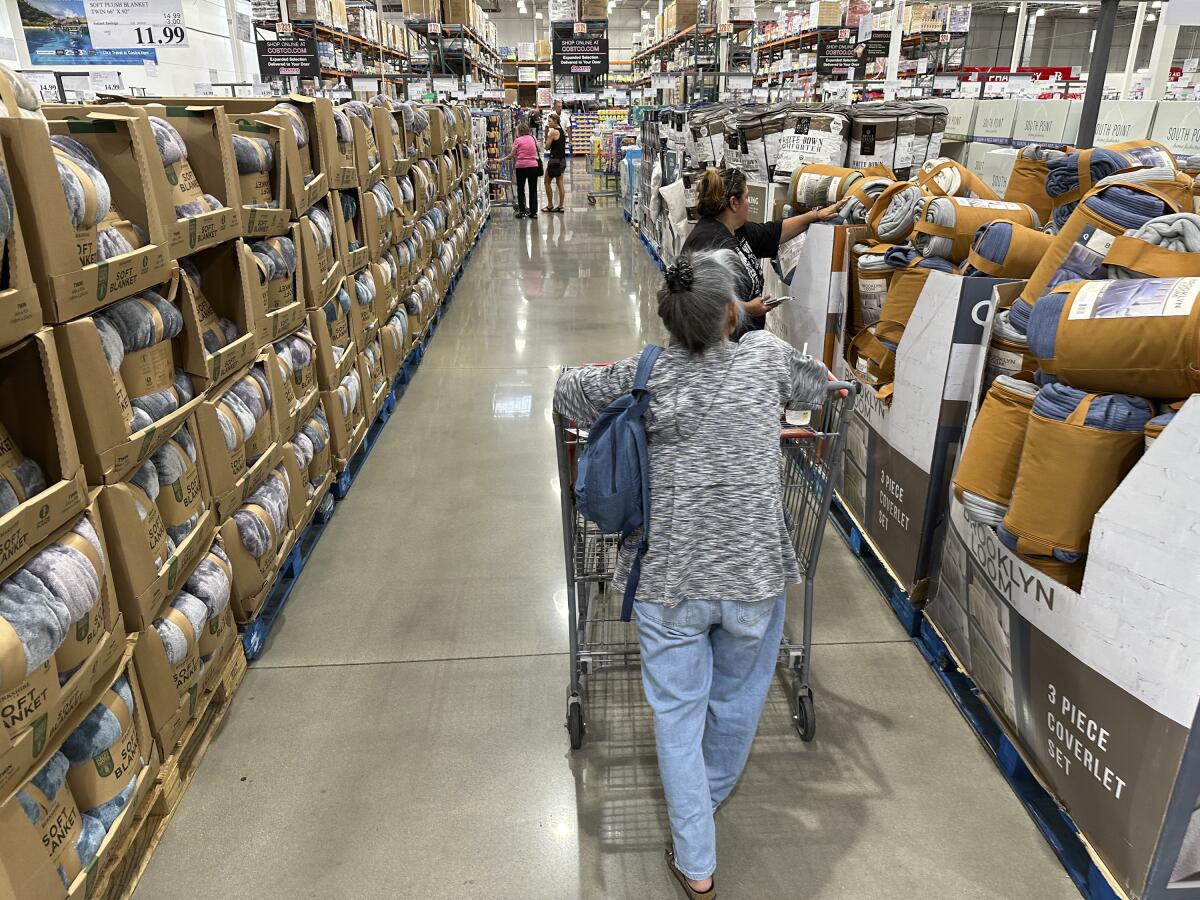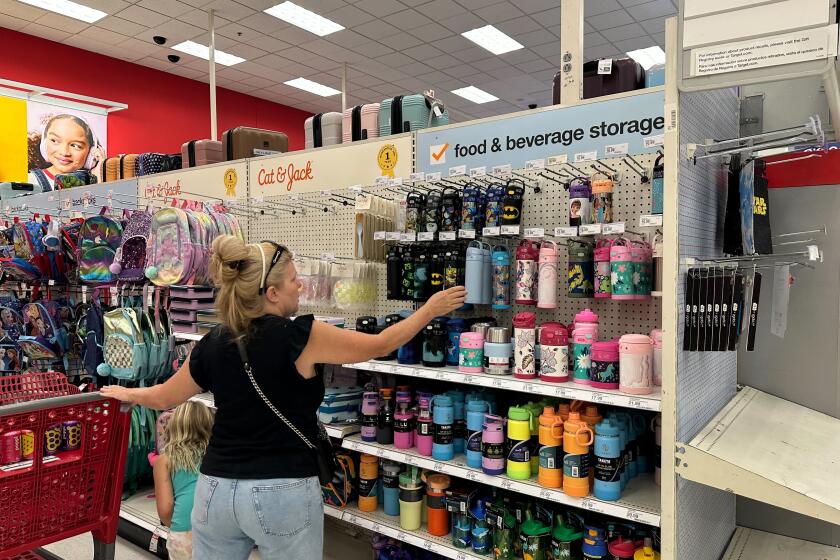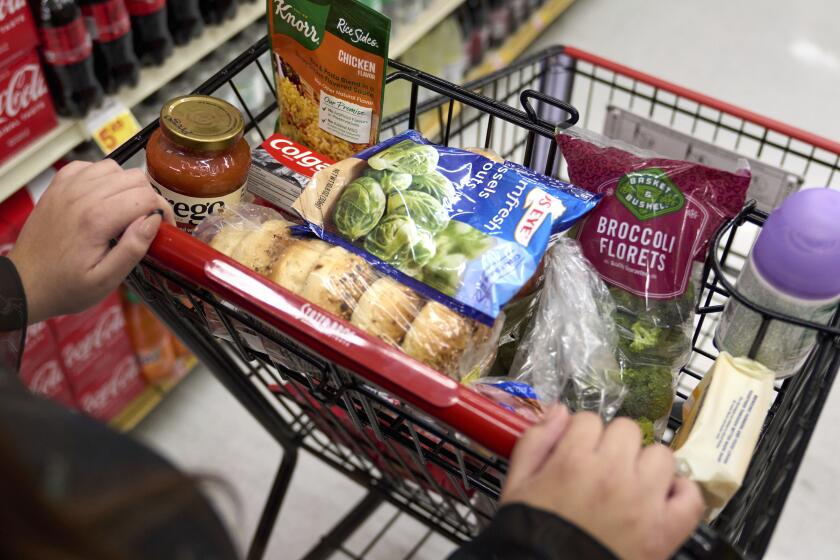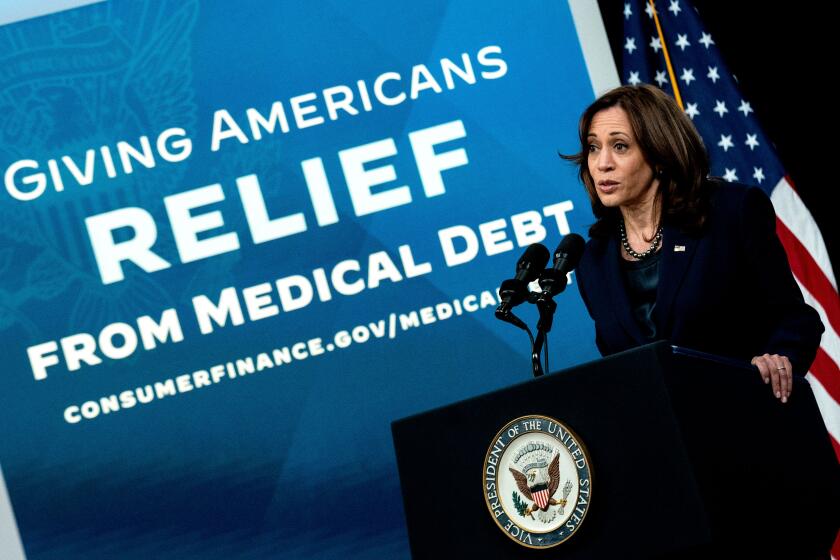Sharply higher gas prices pushed up inflation in August, yet underlying price measures cooled

- Share via
A spike in gas prices pushed up inflation in August, yet most other costs rose at a more modest pace, evidence that price increases overall are still cooling.
In a set of conflicting data released Wednesday, the Labor Department said the consumer price index rose 3.7% in August from a year ago, up from a 3.2% annual pace in July. Yet excluding the volatile food and energy categories, so-called core prices rose 4.3%, a step back from 4.7% in July and the smallest increase in nearly two years. That is still far from the Federal Reserve’s 2% target.
Despite the seemingly divergent figures, the decline in the core measure points to inflation coming under control. The Federal Reserve closely tracks core prices because they are seen as a better indicator of future inflation trends.
Wednesday’s figures also make it more likely the Fed will skip an interest rate hike at its meeting next week. While higher gas prices could lift inflation this month as well, most economists believe that inflation will slowly decline through the end of the year.
On a monthly basis, consumer prices jumped 0.6% in August, the biggest increase in more than a year. Gas prices spiked nearly 11%, though they have since leveled off: According to AAA, the average nationwide price at the pump was $3.85 a gallon on Wednesday, unchanged from a month ago.
As back-to-school shopping is forecast to reach a record $41.5 billion this year, parents and teachers in L.A. debate what’s essential on their lists — and get creative to make ends meet.
The big rise in gas prices accounted for more than half of the monthly inflation increase, the government said.
Excluding food and energy, core prices increased just 0.3% in August from July, though that is up from 0.2% in the two previous months.
Energy costs rose 5.6% just in August, the biggest monthly increase since June 2022. Auto insurance prices also soared, rising 2.4% last month and 19.1% compared with a year ago. The sharp increase in new car prices in the last two years has also made them more expensive to insure and repair.
But prices rose more slowly, or even fell last month for many other items: Used car costs dropped 1.2%, the third straight decrease, while hotel prices fell 3%, also the third consecutive fall.
Grocery prices moved up 0.2%, a trend that has strained many households’ finances. But food cost increases are cooling: They rose 3% compared with a year ago, down from double-digit increases last year.
Consumers are switching grocery stores, brands and ingredients as they try to cope with the cost of food.
Federal Reserve officials are becoming more open to the idea that inflation is coming under control, though Chair Jerome Powell said last month it was still “too high.”
But in his high-profile speech at Jackson Hole, Wyo., Powell said that the Fed would proceed “carefully” with any further rate hikes, something many economists saw as an opening for the Fed to skip a rate increase at its Sept. 19-20 meeting. When the Fed increases its key rate, it typically raises the cost of mortgages, auto loans and business borrowing.
The Fed has lifted its benchmark interest rate 11 times in the last 12 meetings to about 5.4%, the highest level in 22 years. It increased the rate a quarter-point in July after leaving it unchanged in June.
Lorie Logan, president of the Federal Reserve’s Dallas branch, said last week that “another skip could be appropriate” at its next meeting, “but skipping does not imply stopping.”
Investors see only a 3% chance of a rate hike next week, according to CME’s FedWatch. But they have priced in a 40% chance for an increase at the Fed’s subsequent meeting in November.
One in 10 residents in Los Angeles County are burdened by medical debt. And the uninsured aren’t the only ones vulnerable to debilitating health bills.
The European Central Bank is also contemplating lifting its key interest rate at its next meeting Thursday, though officials could choose to also skip an increase. The European economy is nearing recession as it struggles with high inflation and rising borrowing costs.
The 20 countries that use the euro currency are expected to grow just 0.8% this year, according to a gloomy forecast issued Monday by the European Commission, the European Union’s executive arm. Germany’s economy, the EU’s largest, is projected to shrink 0.4%. Inflation in the EU is higher than in the U.S. — it was 5.3% in July — though that is half of the 10.6% peak reached in October.
More to Read
Inside the business of entertainment
The Wide Shot brings you news, analysis and insights on everything from streaming wars to production — and what it all means for the future.
You may occasionally receive promotional content from the Los Angeles Times.












